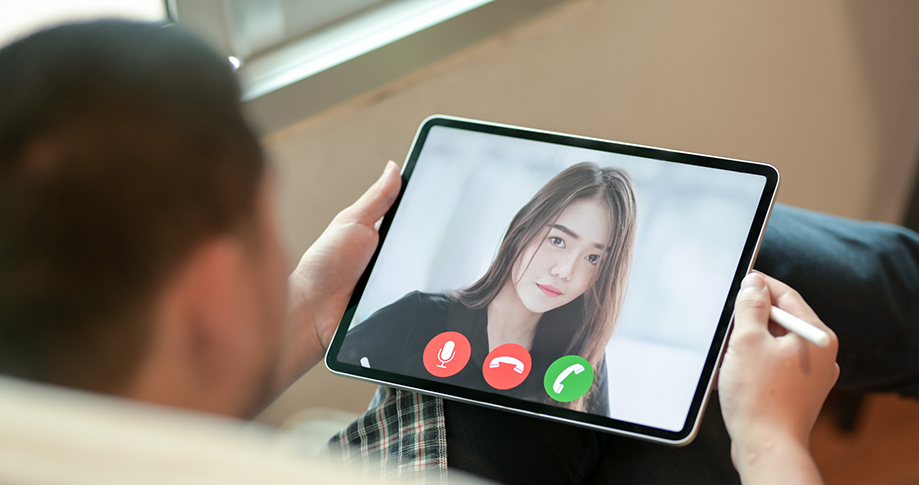Article menu
The start of the Covid-19 pandemic in spring 2020 forced most organisations to change to recruiting remotely. Although options were limited at the time, this shift made us realise that in many cases virtual recruitment can be much easier and quicker, for both recruiters and candidates. And with most charities still working from home at least some of the week, many have stuck with it long after we’ve been allowed to meet people face-to-face again. But are you familiar with remote recruitment best practice? Here’s our advice on how to recruit remotely.
What is remote recruitment?
Essentially, remote recruitment is conducting interviews and assessment tasks online, rather than meeting a candidate in person. This is usually over a video call, using an app like Zoom, Slack or Microsoft Teams, which have become common place for home-working in the last few years. First contact with candidates will usually be via email, or sometimes it can be helpful to do an initial phone screening to help narrow down a shortlist.

The benefits of virtual recruitment
Remote recruitment saves time
Remote interviews are more flexible and can be scheduled with less notice for both interviewers and candidates. This means you can interview more applicants in less time.
Virtual recruitment can increase your pool of candidates
If you’re recruiting remote workers, then virtual hiring opens up the geographical boundaries of your pool of potential applicants. You can attract the best talent from anywhere, without candidates being deterred by having to travel hundreds of miles for an interview.
Remote recruitment makes it quicker to hire
The current recruitment market is very fast-moving, with the candidates shortage meaning they hold all the cards. The quicker your recruitment process is, the more likely you are to hire someone great, and remote recruitment means you can speed up the time between rounds of interviews and get ahead of your competitors.
Virtual recruitment gives a better candidate experience
Candidates can interview for your role in their own environment, rather than on your territory, which can help them to feel more relaxed and perform better. They also don’t have to worry about travel costs, being late or time away from their current job.
How to recruit remotely
Video calls are obviously the default way of recruiting remotely—and this generally makes sense, However, you may find that some jobs aren’t suited to video interviews—because of the nature of the job and the candidates you want to attract. There are candidates who may not be able to access or afford the technology, or they may just not feel comfortable speaking on screen. Dependent on the job, it could be that a phone interview is a more effective way of speaking to candidates.
However, most of your remote recruiting is likely to be done by video call, so here are our top tips for conducting video interviews.

Remote recruiting tips for video calls
You may find it helpful to consider these points before you book video interviews in, so that you’re being fair to the candidate and are able to conduct them without a hitch.
1. Check and prepare the tech in good time
Make sure you’ve set the tech up and tested it before the time of the call or interview. It’s still possible you may lose your internet connection or be let down by tech in some other way—don’t let that throw you if it happens. Always have the candidate’s phone number to hand as a back-up plan.
Make sure you’ve allowed the candidate to prepare too. Send them clear instructions in advance on how to use your chosen app. Different people have been regularly using different apps, so don’t assume they’ll definitely be familiar with yours.
Any interview tasks, tests or work samples can also be completed remotely. So don’t forget to email these to candidates in good time and allow them the opportunity to ask questions if anything is unclear.
2. Choose a suitable place
We’re all now well-used to seeing what our colleagues’ bedroom wallpaper looks like, but for a job interview, you should try to find a place to set up that has a decent background and is quiet. And while you may not need to be dressed as you would for a day in the office, it’s remote recruiting best practice to look reasonably smart, to be respectful to the candidate.
Also, do what you can to prevent any unexpected interruptions and turn off notifications on your phone and computer.
3. Be prepared
Take just as much time to prepare as you would for a face-to-face interview. Also, if there’s anyone else interviewing with you, make sure they’ve read the candidate’s application and CV in good time as well. Our applicant tracking software, Applicant Manager (available free when you post a job with us) is ideal for this, as applications and interview notes can be shared with all members of the interview panel, so you can easily collaborate even when everyone is remote.
Think ahead about how you’ll take notes in the interview so as not to be off-putting. You don’t want to spend all your time looking down and typing—so work out how you can make notes in a way that’s discreet and secure.
4. Communicate honestly and get back to candidates when you say you will
One of the key benefits of video interviews is that, rather than scheduling interviews all on one day when the interview panel members are free, they can be easily slotted in wherever you are. However, for candidates that can mean waiting longer to hear the outcome, and/or a lack of clarity on when that will be.
Especially in the fast-moving recruitment market as we currently face, it’s important to keep candidates well-informed at each stage of the interview process and follow-up when you say you will. Even if there’s been a delay, it’s best practice to still update them when you said you would.
5. Put the candidate at ease and thank them for their time
Without being able to welcome and end an interview in the way you would in person, you can easily come over as a bit of an automaton on screen, which isn’t fair to the candidate. Take the time to ask how they are before you start, and to end the interview by thanking them for their time and effort.
6. Give the candidate time
Pause to ensure the candidate is done with their answer, before moving onto the next question to account for time lags and lack of usual social cues. It’s good practice to wait a few seconds before cutting in, just in case.

Don’t forget the candidate experience
In the current market, the candidate experience is really important. If your first choice applicant has been offered two roles, you want their positive experience with your charity to mean they choose yours. It boils down to being extra vigilant about treating people courteously. Taking the time to properly prepare for remote recruitment is part of that—as is being scrupulously good at getting back to candidates when you say you will and being upfront and honest about any delays.
Looking for the perfect hire? Advertise a job on CharityJob and effortlessly connect with qualified candidates. Find the right talent and fill your vacancies faster.
This post was originally published in 2020 by Jean Merrylees and has been fully updated to ensure relevance and to reflect the current job seeker experience.
Tags: charity recruitment, remote recruitment, working from home





